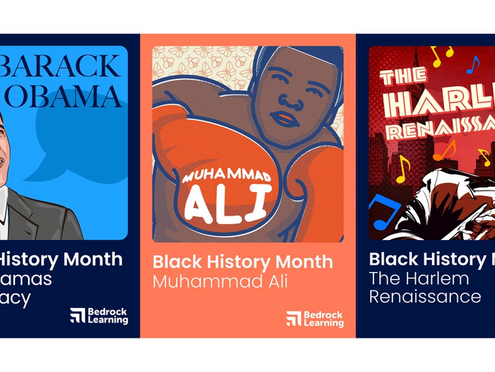While we all deserve a good pat on the back for this progress, the EPI were careful to stress that this was not a reason for us to rest on our laurels. There are still “significant numbers [of EAL students] who have low attainment,” the report conceded.
Despite the fantastic successes on EAL learners in secondary education, the question remains: what strategies can we use to help EAL learners still struggling with improving their literacy and communication skills?
The challenge of improving literacy in EAL students
I’m not saying anything new when I state that literacy improvement is the most important goal when it comes to supporting our EAL students.
Vocabulary instruction is important for everyone we teach, but for learners who don’t use English as their first language, it is especially crucial that we are regularly exposing them to Tier 2 vocabulary, using a variety of methods that will make this language familiar and accessible to them.
It’s easy to forget that, for many EAL students, there may be very few opportunities – if any – where they encounter Tier 2 vocabulary, in English, outside of the classroom. A learner who watches television in their home language, reads books in their home language, and communicates with their parents solely in their home language is unlikely to pick up the language that some of their peers may have seen or overheard incidentally. In these circumstances, the responsibility is almost entirely on teachers and schools to help bolster EAL learning.
This is a big task, but one worth undertaking to help EAL learners thrive.
The strategy to improve EAL students' literacy
When supporting EAL students, the key to ensuring literacy improvement is to be varied with your teaching methods, while being careful to make sure the activities are both challenging and accessible. Some of the most effective EAL strategies, for instance, are ones that encourage students to think visually. This is because images transcend language barriers.
By encouraging a learner to try and draw their interpretation of a new word, or by getting them to match a word to an appropriate image, you help them to make links between unfamiliar language and sights they already know and understand. They can draw from their prior knowledge and experience in a way that will help them to comprehend and retain new words.
Beyond this, it is important that you never discourage EAL students from using their home language. Although it may initially appear counterproductive, supporting your EAL learners’ use of their home language is a great way to create significant literacy improvement. As Jim Cummins asserts, “conceptual knowledge developed in one language helps to make input in the other language comprehensible.”
In other words, it’s easier to understand a new language if you can relate it to the language you already know. For example, when challenging your learners to think about synonyms and antonyms, it’s a great idea to encourage your EAL students to think of synonyms and antonyms that exist in their home language. This way, you help them to form relatable links and associations between the words they’re comfortable with, and the new words they’re trying to learn.
To cement these links and make them graphically accessible, you can build a semantic map that visually represents and explains the connections between a word and all its English and non-English synonyms and antonyms. From then on, your EAL students will always have a foundation of words they can build upon.
EAL students make remarkable progress in their vocabulary and literacy skills when they use Bedrock. For more information about the progress EAL students can make on Bedrock Learning, contact us.




